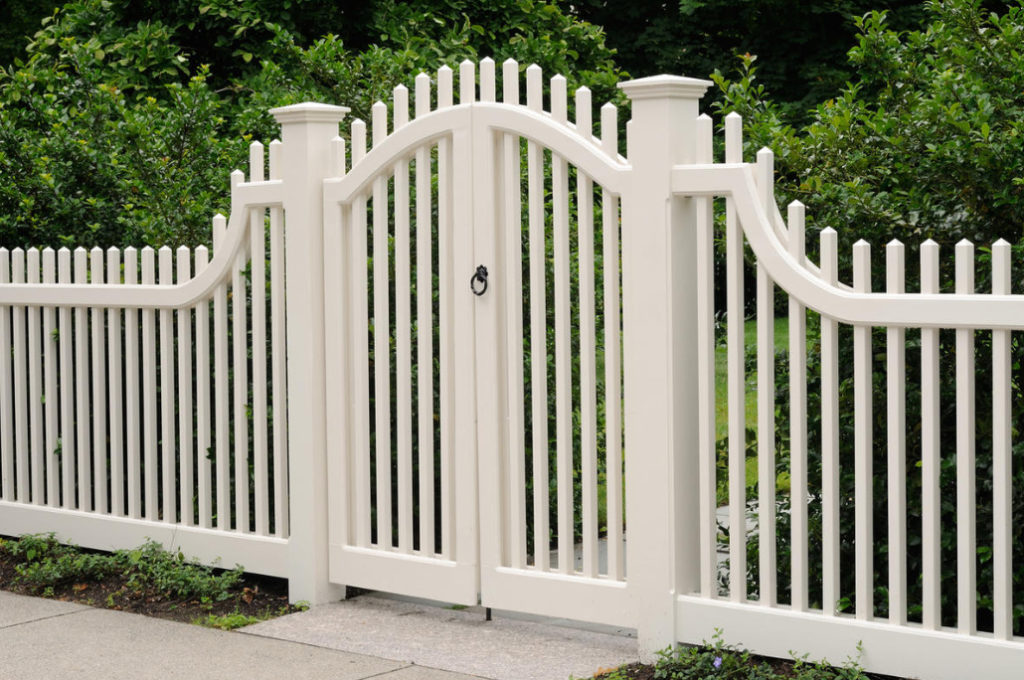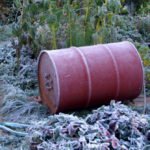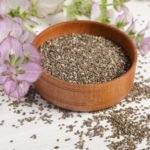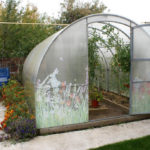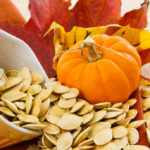The topic of fencing private property is concerned not only their owners and manufacturers of fences. Psychologists, historians and culturologists are trying to understand the origins of people’s craving for fencing. But let’s leave this question for another case and turn to the main topic-the relevance of fences made of different materials.
In previous publications, we have priced wooden and metal fences, considered as a fence concrete structures and analyzed the various options of the fence from the grid. It’s time to find out what it is, a fence made of relatively new materials-different types of plastic and polymers.
White fence — “the great American dream”
One of the most common ideological cliches of the last century was the expression “the great American dream”, which implied the material and spiritual values of the American nation. A special symbol of property well-being and the embodiment of the desired goal was a white fence enclosing a neat lawn and a neat house of the average us citizen.
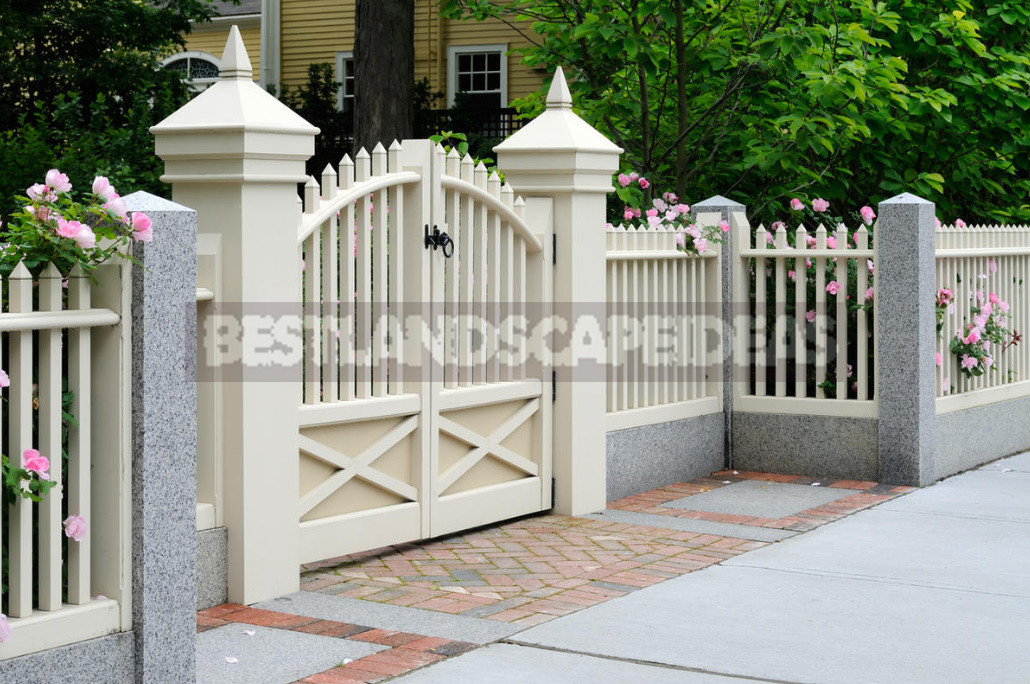
And whatever they say about the notorious white fence, this type of designation of the boundaries of the site is really beautiful. Modern industry offers an almost perfect solution to the question of dream fence-PVC fencing.
Plastic fence (this is how these products are usually called) can be of different design: lattice, braided, stacked, have blind sections or simulate a classic picket fence. Be high (up to 2 m) and low, more suitable for fencing flower beds. And Yes, PVC products are produced not only in white. They can be picked up under a shade of facing of the house from vinyl siding.
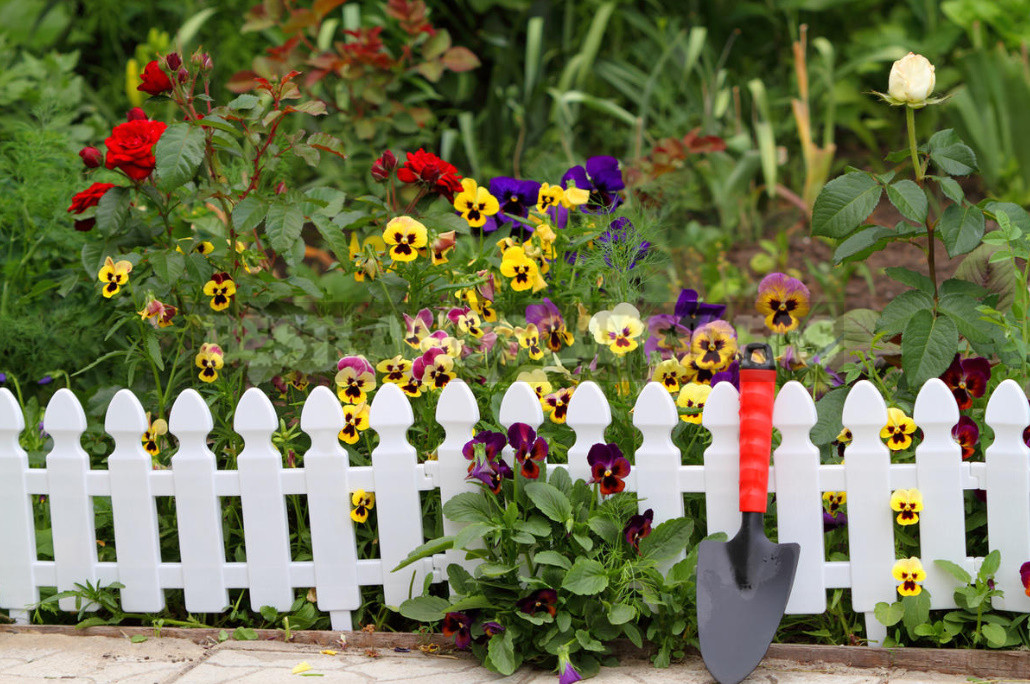
Although white and beige options are the most popular. For the same reason as the light siding: staining increases the cost of the product, and the bright colors of PVC are also not very stable to ultraviolet rays-burn out.
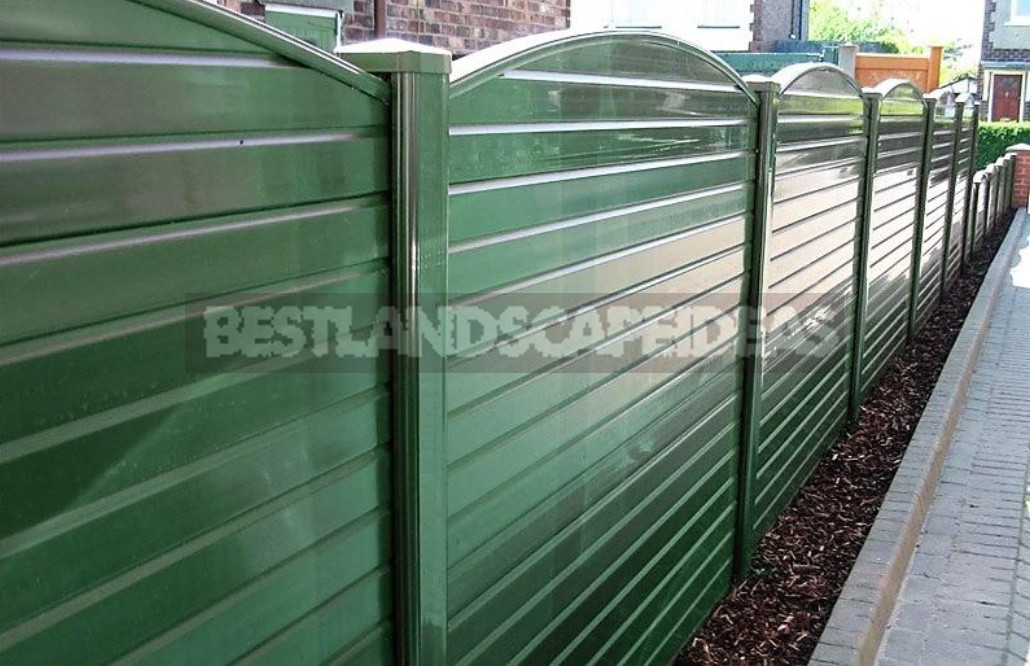
Fences made of such material have many positive qualities, in addition to appearance. They are durable (manufacturers guarantee at least 20-30 years of service), do not rot, unattractive to insects and mold. They are easy to care for — to restore the original appearance, simply wash with a hose. Fences made of plastic are light, mounted on poles made of the same PVC, which are concreted into the ground, but at the same time quite strong.
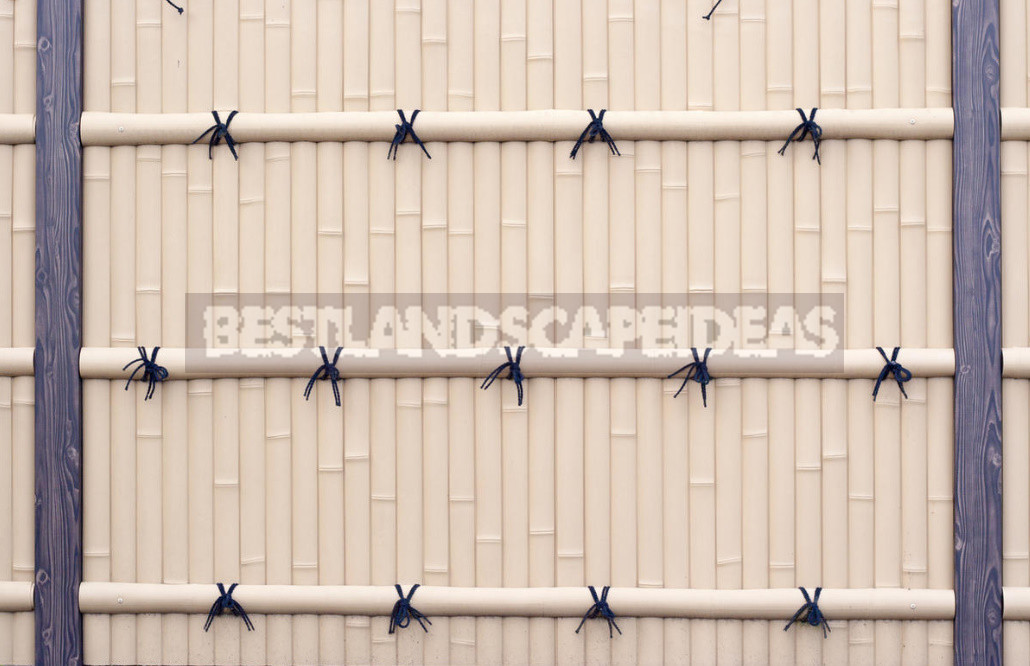
In addition to the fence sections, the kit offers a variety of accessories: gates and wickets, pommels for posts and other elements that allow you to easily create a single complete ensemble.
Liquid wood for fence
Liquid wood some manufacturers call wood-polymer composite (WPC), which is used to make facade cladding, decking terrace, as well as slats for fencing.
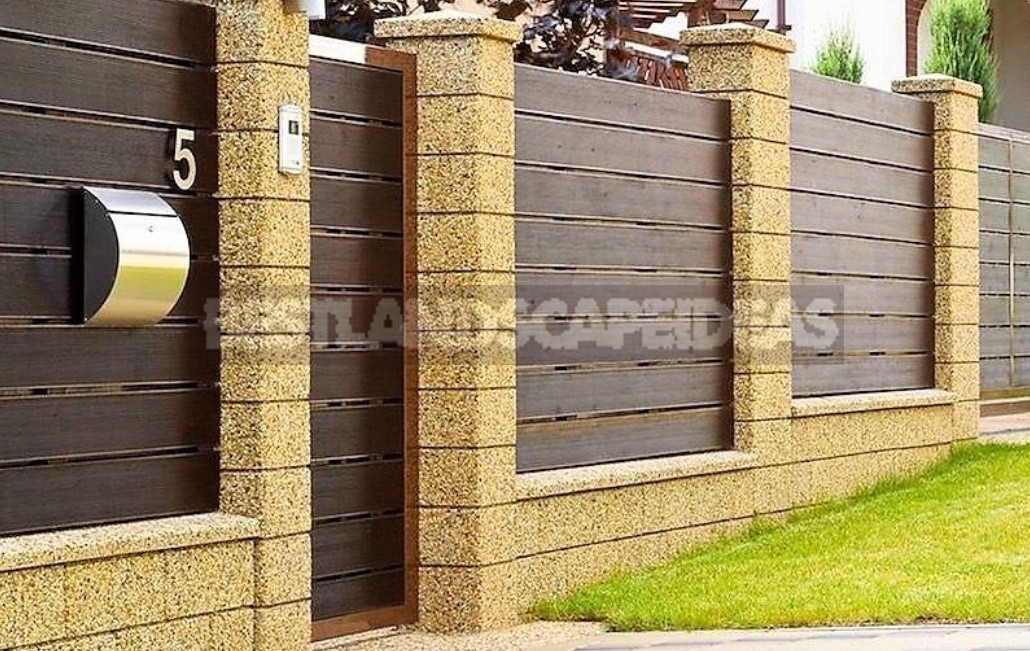
WPC is a mixture of wood dust (about 60%) and polymer resins. Unlike facade cladding or decking, wood-polymer elements for fences are bilateral — on both sides there is a pattern of wood texture. Available in different versions, close to the natural colors of the tree of different breeds.
As well as other plastic products, WPC fences are durable, wear-resistant and do not require repair and updating. Such boards can be mounted, as well as usual or by means of the special profile limiting on perimeter a fence section. This profile will hide the fact that the Board on your fence is hollow inside.
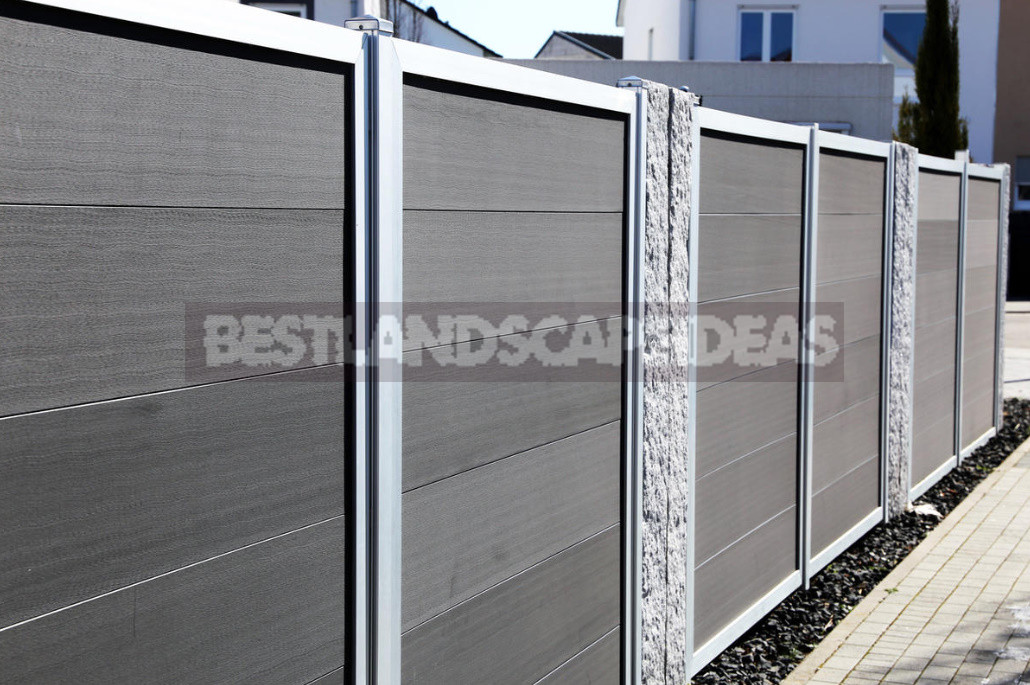
Polycarbonate is not only for greenhouses
Another plastic version of the design of the fence — polycarbonate. Discovered accidentally by Alfred Einhorn in 1898 while searching for a remedy for anesthesia, and in the 70s of the last century developed in Israel specifically for greenhouses, today this material is widely used to create various light-transmitting structures. And fences made of polycarbonate are also naturally popular.
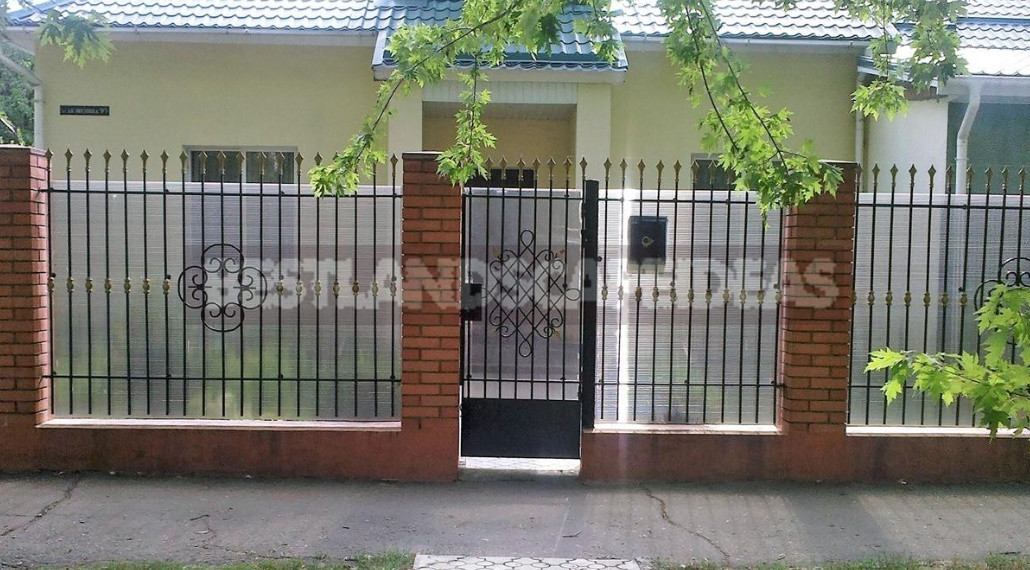
A clear advantage of this type of material to fill the intake sections — transparency. The owner at the same time receives the deaf protection protecting from street noise and a dust, and does not block to rays of the sun access to the yard. For the device of a protection use sheet cellular or monolithic polycarbonate. The most elegant polycarbonate sheets look in combination with metal forged fence. But it will fit and just mount on a metal frame — as well as sheets of corrugated Board.
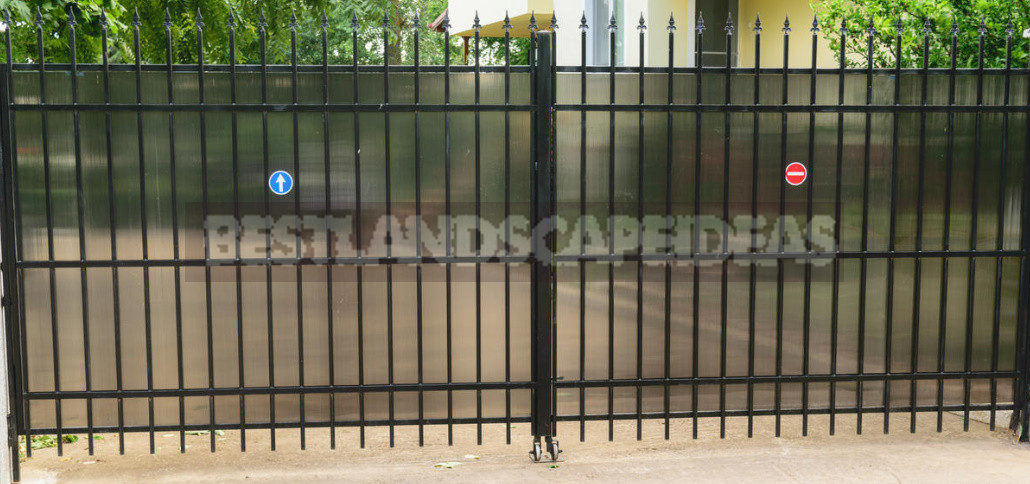
When buying a material, pay attention not only to its color and transparency, but also to the degree of protection from the destructive action of ultraviolet light. The cost of the fence made of polycarbonate depends on the thickness of the sheet material and the method of installation of pillars.
Nothing to hide
If you are concerned not so much the views of outsiders as the noise and pollution penetrating the site, you can build a completely transparent fence of plexiglass.
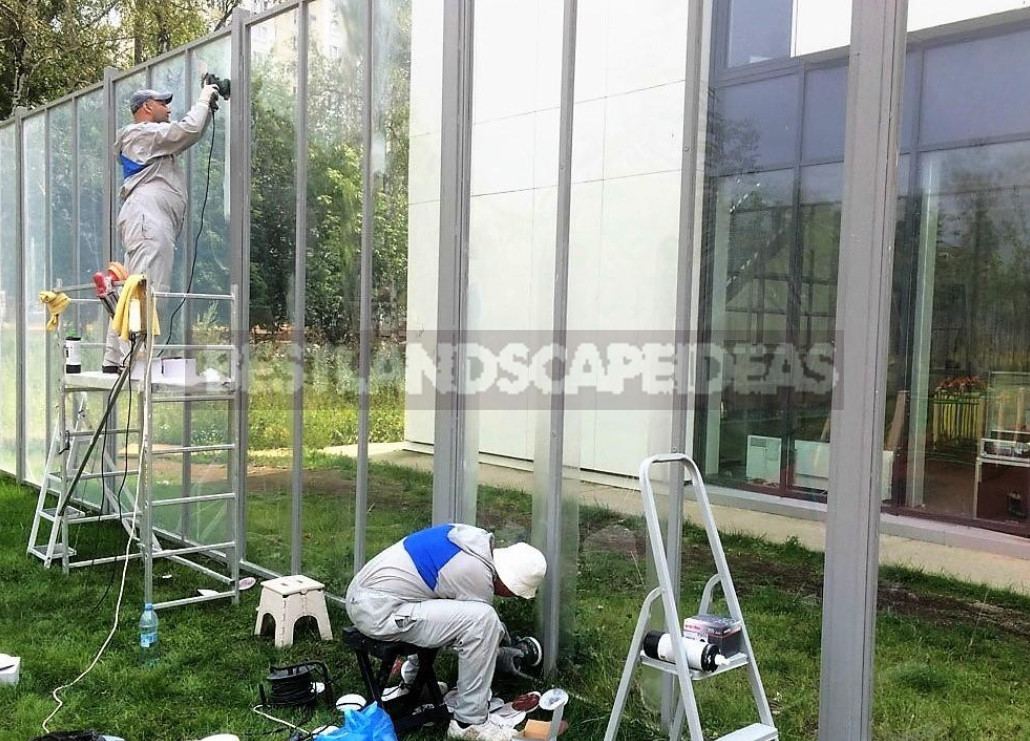
Organic glass can be not only transparent, but also colored, with partial light transmittance or completely opaque. And also have a honeycomb structure, matte or textured surface. On the surface of the panels of organic glass, you can apply a pattern in the form of engraving.
Another option of acrylic glass — mirror. They say the idea of creating a fence that reflects the outside world and lets the sun Shine, belongs to the American Alison Shots. Playing with reflections is one of the traditional methods of interior design. And today this solution is increasingly used in open spaces.
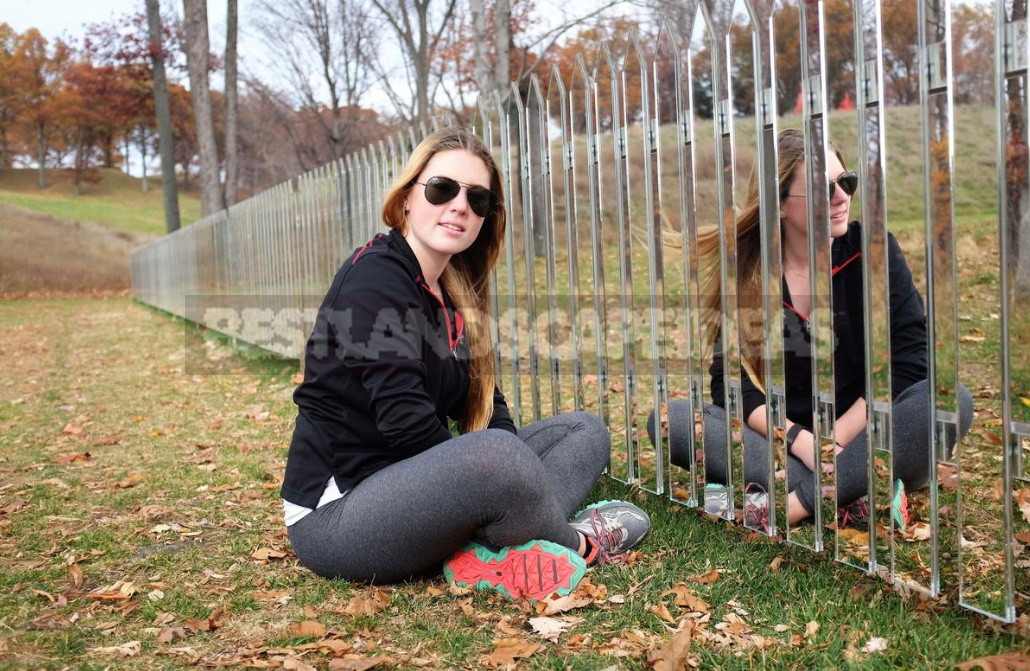
Deciding to get a mirror around the perimeter of the site, do not forget that solar glare can cause car accidents, and possibly spontaneous combustion in hot dry weather.
A fence made of plastic slate
Previously, the option of creating a fence of roofing material-cement slate. But the finish coating for roofs is made of various types of plastic. These materials are also suitable for fencing.
Wavy sheet material
Polycarbonate is produced not only with the usual smooth surface, but also profiled. The profile of the sheet can be wavy or have the same cross-section as a standard sheet of metal decking. This is very convenient — you can combine transparent parts of the fence with metal.
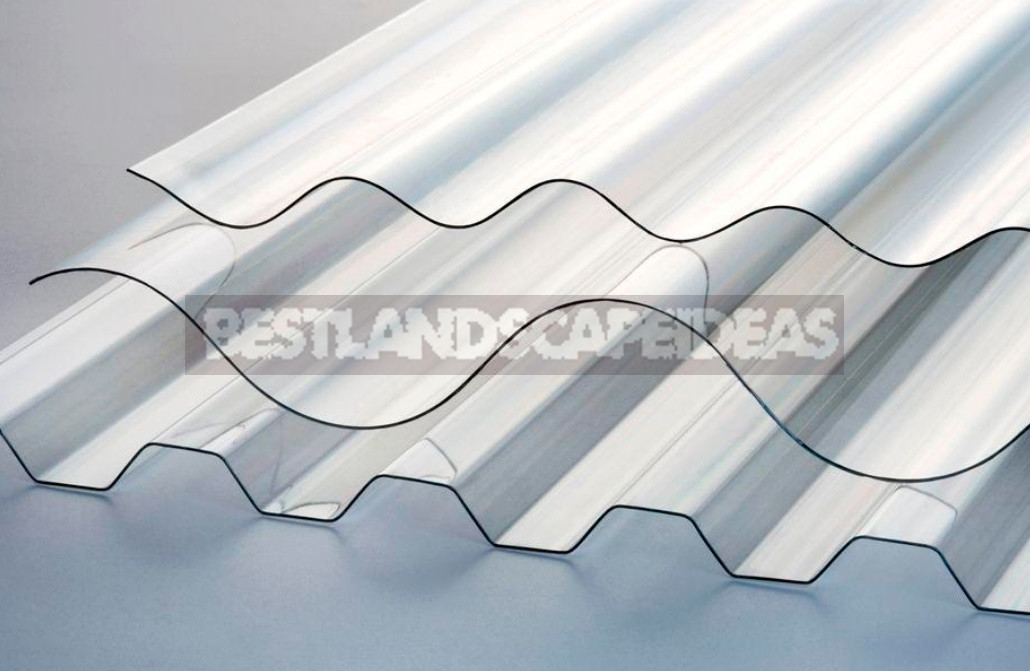
As well as the usual polycarbonate, wavy and profiled is of different colors and is suitable for fencing. In addition to polycarbonate, for the manufacture of profile sheets used PVC, polystyrene.
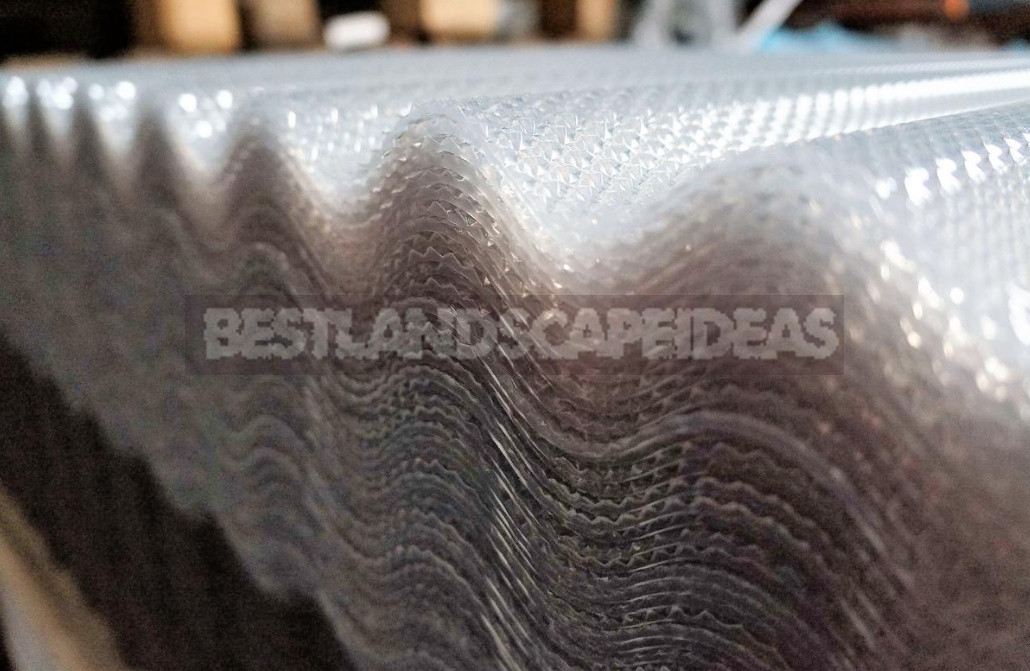
For those who do not have enough undulation, you can offer a similar material with a 3D surface.
Fiberglass roll slate
Roofing, suitable for the construction of fences, can be not only rigid sheet, but also flexible roll. Most often, rolled slate is made of plastic reinforced with fiberglass. As well as other polymeric materials, can be absolutely any coloring.
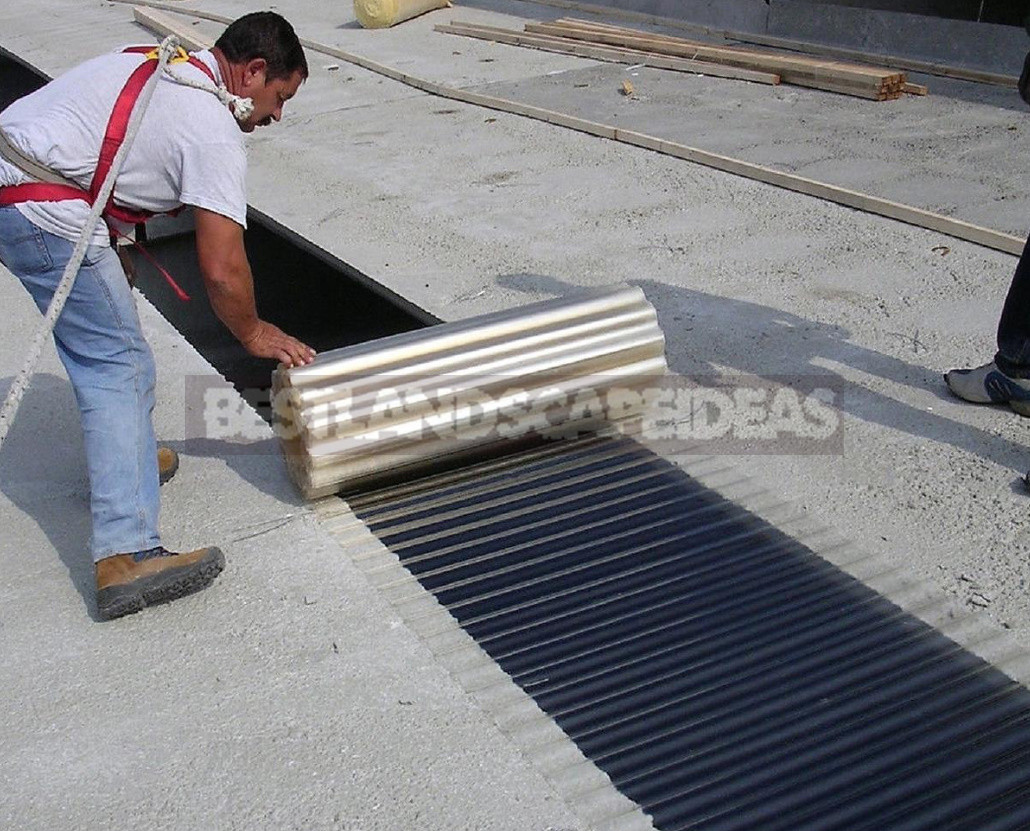
Fence from recycled materials
Recycling of waste is an important issue of our time. Today, products made from recycled materials are increasingly used in the construction industry: road surfaces, bridge structures, Park benches, urns and much more. And, of course, fencing, including for private property. Those who care about environmental issues will like fences made of recycled plastic.
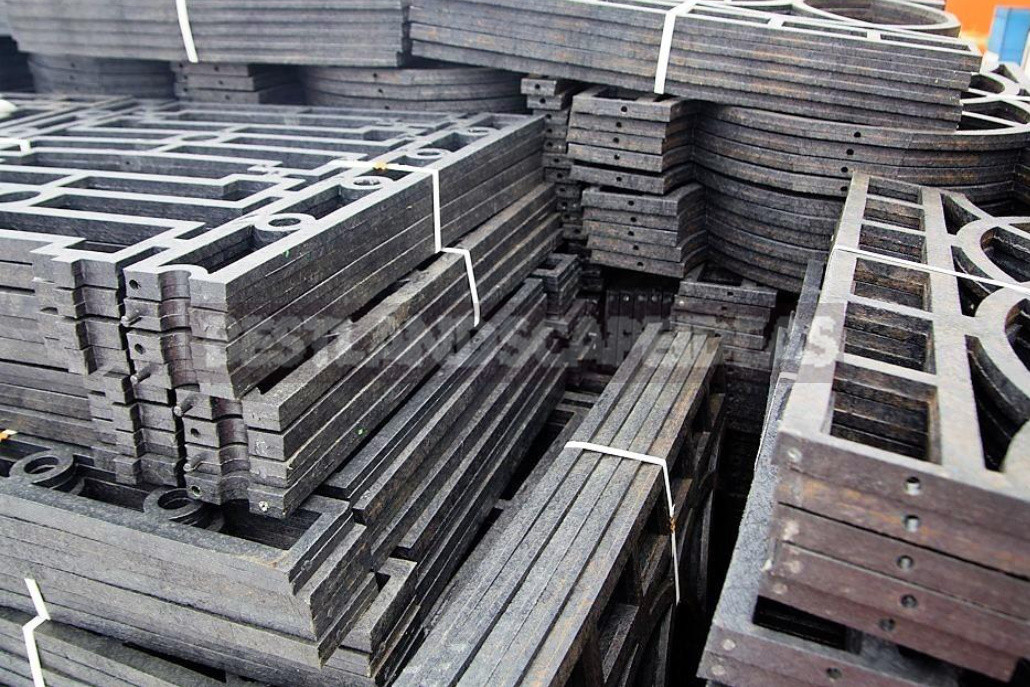
Do not think that recycled-it’s something dirty and ugly. Although, in my opinion, about homemade fences made of plastic bottles, images of which are full of Internet, in many cases, you can say so. Fences made of recycled plastic can have quite a presentable and stylish appearance. And the durability of such products can no longer be mentioned. The cost of elements for fences of this material depends on the shape and size.
Exercises with ribbons
It is possible to become the owner of a fence with use of durable plastic, already having a fence from other material. Fence tape made of polypropylene or PVC is often used to update or upgrade the barriers of nets-a structure of vertical and horizontal rods.
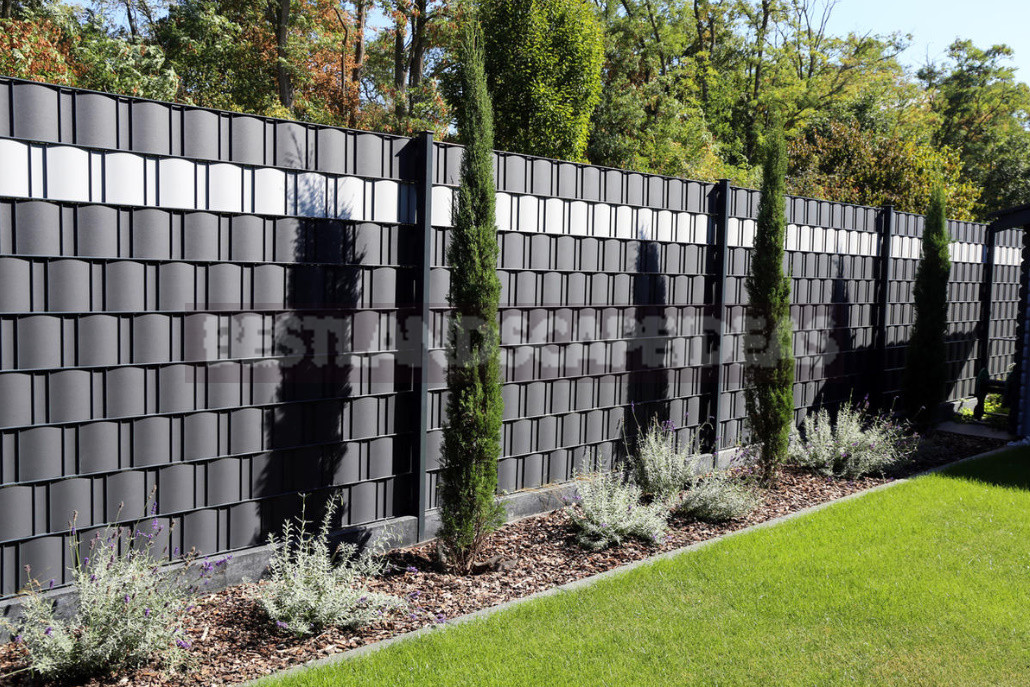
The tape is available in different widths (for different types of nets) – from 44 to 190 mm, different colors, with a smooth or embossed surface. In addition to the tape itself, end clips are offered for a more accurate installation.
Plastic in various variations is a good choice for fence construction. This material can easily compete with other traditional solutions, even without being the cheapest. The financial costs are more than compensated by the long service life and the absence of the need for regular maintenance and renewal.
